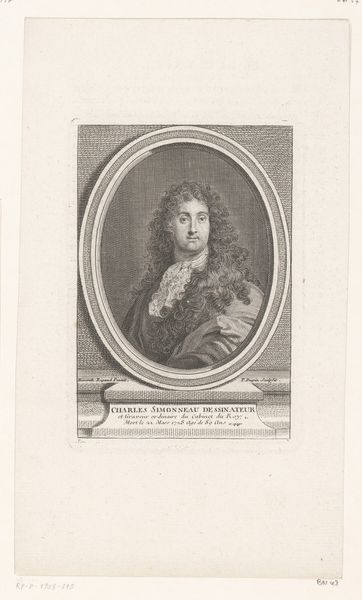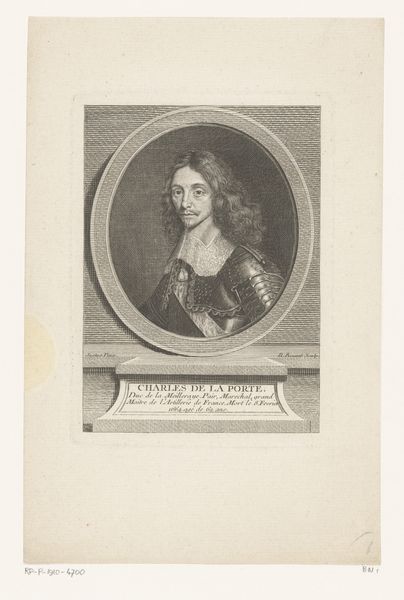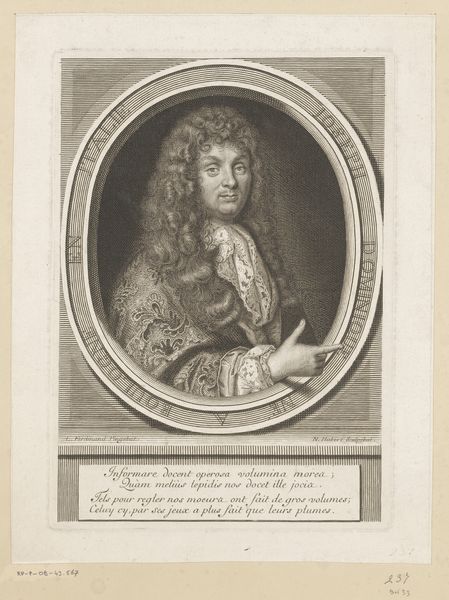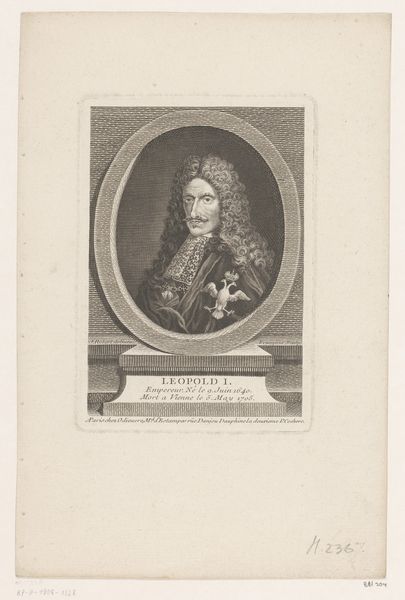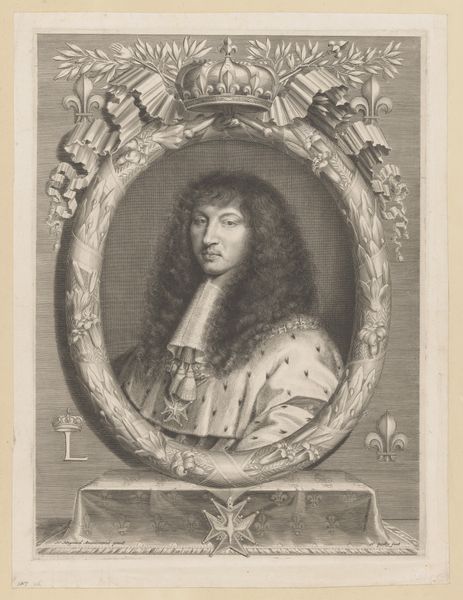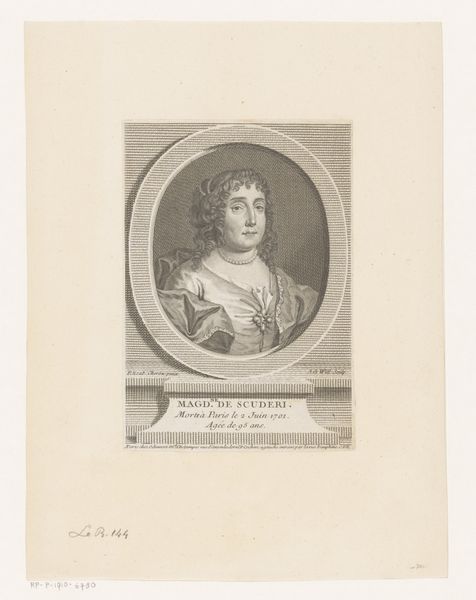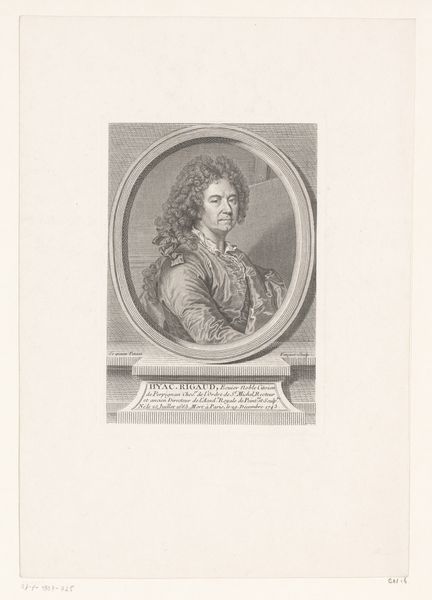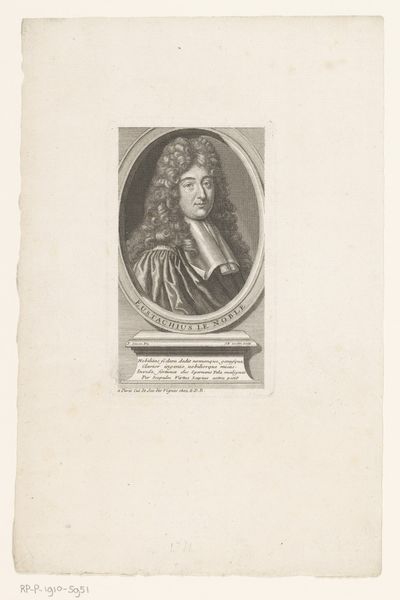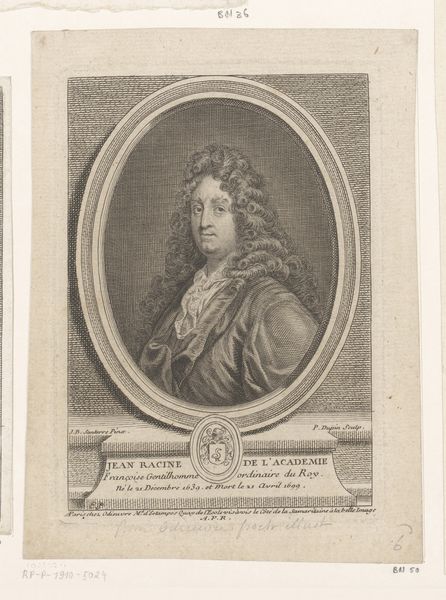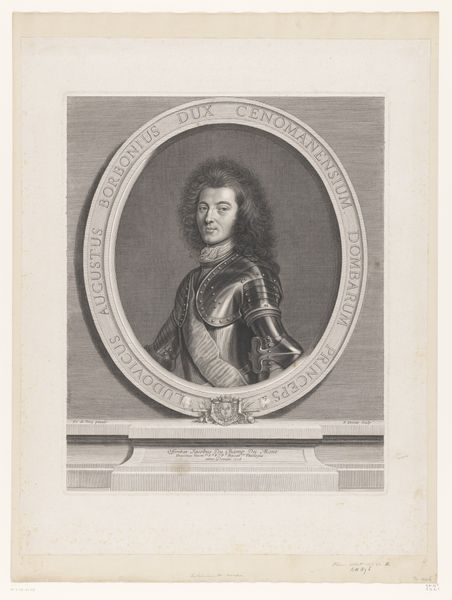
engraving
#
portrait
#
baroque
#
old engraving style
#
figuration
#
line
#
history-painting
#
academic-art
#
engraving
#
miniature
Dimensions: height 149 mm, width 105 mm
Copyright: Rijks Museum: Open Domain
This is Philippe Le Fevre's portrait of Louis II de Bourbon, Prince de Condé. It's an engraving, a printmaking technique that allowed for wide distribution of images. Made in France, the portrait reveals much about the social and political climate of the time. Louis II was a prominent figure, a member of the royal house of Bourbon, and a military leader. His flamboyant wig, the lace collar, and the ornate decorations all speak to his aristocratic status, reinforcing the visual codes of power and nobility prevalent in the 17th century. The oval frame is not accidental; it borrows from the tradition of ancient Roman portraiture, linking Louis to a lineage of power. The engraving served a distinct social function – to disseminate the image of the prince, reinforcing his status and solidifying his position within the French court. As art historians, we delve into archives and libraries to understand the social and institutional context that shapes such images, revealing how art serves as a mirror reflecting the values and power dynamics of its time.
Comments
No comments
Be the first to comment and join the conversation on the ultimate creative platform.
